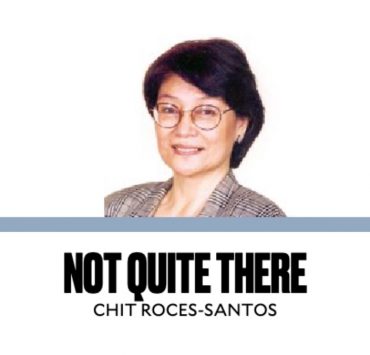Countdown to The Pen’s 50 years through art
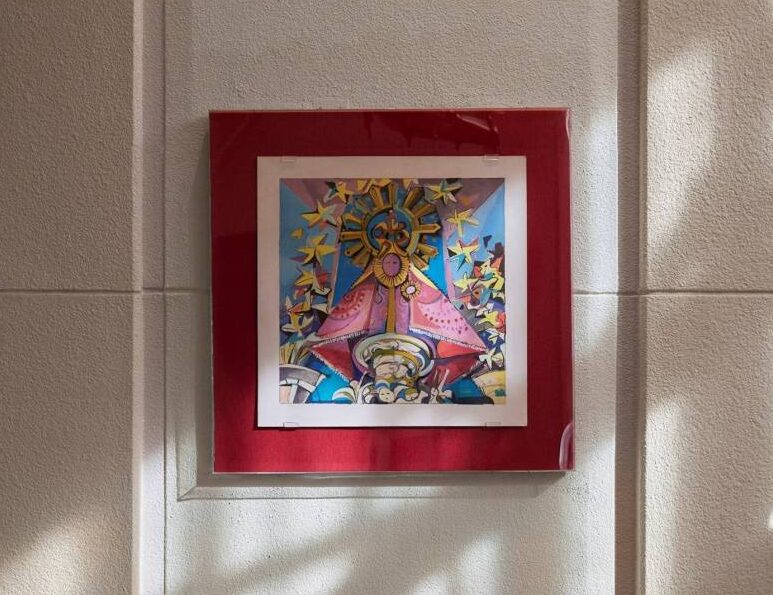
Traces of bullets fired during the Nov. 29, 2007 siege of The Peninsula Manila had long been erased, but they are symbolically immortalized by the pair of artworks displayed at the hotel’s front office. The mixed media creations by partners Alfredo and Isabel Aquilizan, titled “Yin” and “Yang,” are chiefly made of polyvinyl chloride and wood to imitate the metal projectiles’ shape and the holes they create when embedded into a surface.
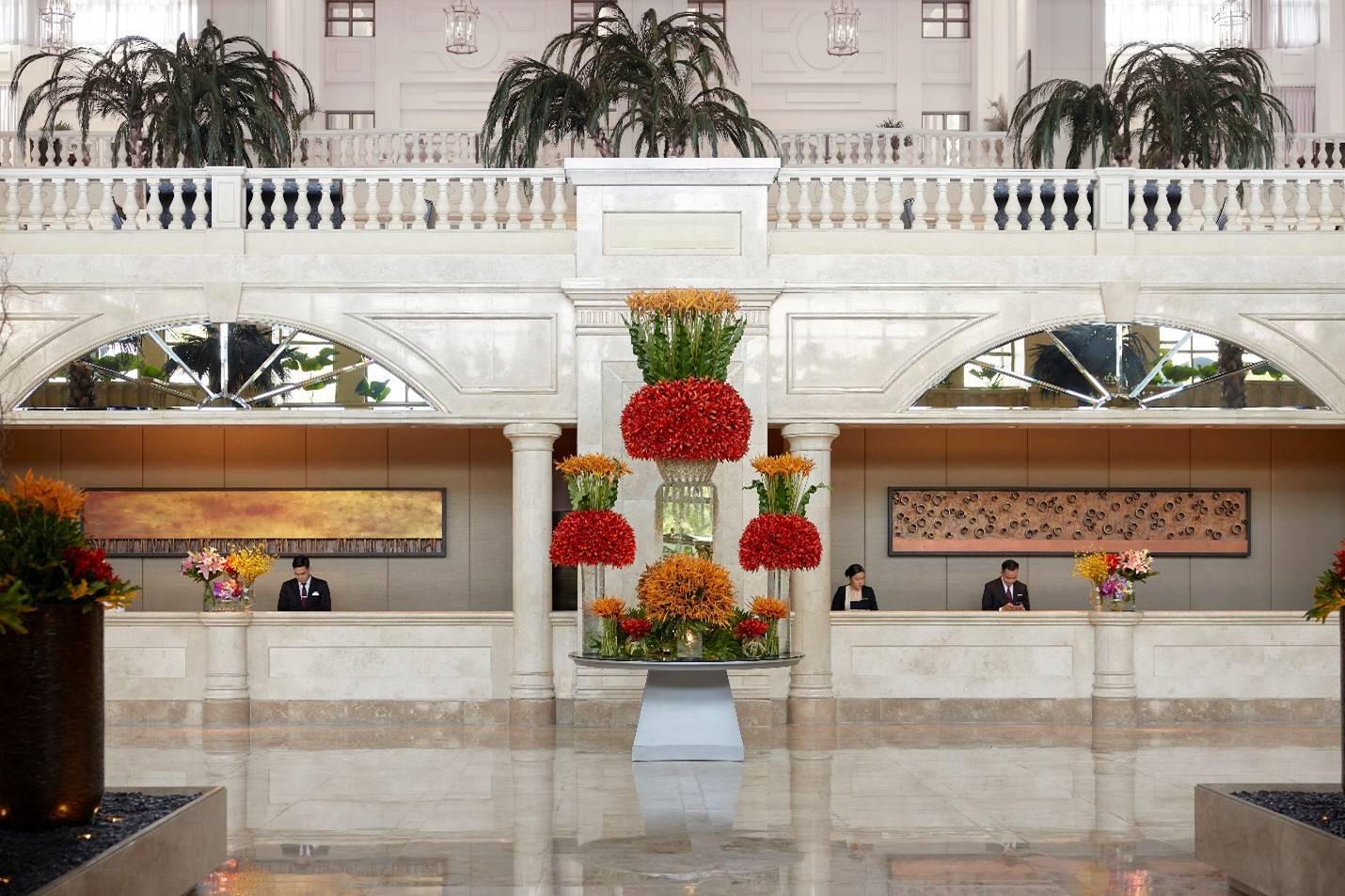
That historical event likewise remains fresh in the minds of longtime employees of The Pen. Public relations director Mariano Garchitorena, brand marketing executive Grace Lim, and The Gallery Club manager Aubrey Jacob took Lifestyle down memory lane during a recent visit. The hotel, which is located at the corner of Ayala and Makati Avenues in Makati City, will turn 50 in two years.
Garchitorena recalls being away that fateful day with fellow executives for a company activity in Tagaytay, so he didn’t know that Antonio Trillanes IV, then on trial for leading the 2003 Oakwood mutiny attempt, had marched into The Pen with other former military forces and their armed guards. Trillanes and his group, with some supporters, then occupied the hotel’s second floor while calling for the ouster of President Gloria Macapagal-Arroyo.
Heroes
“My very first call came from PDI,” Garchitorena says, referring to this newspaper, about what was going on at The Pen. He then called up Lim, who was at work, to know how the people at the hotel were doing. Lim remembers they were asked by police authorities to evacuate at around noon and, by 3 p.m., they had safely left the hotel premises. At past 5 p.m., military and police forces shot at the glass doors of The Pen before letting an armored fighting vehicle (AFV) ram into the lobby to force Trillanes and his group to surrender.
Lim gives credit to the hotel’s front of house, housekeeping, and food and beverage personnel for being “heroes” during that difficult situation. “They actually walked each and every guest to different hotels,” she points out, adding that some photos of their heroic acts had been published in different newspapers.
The Pen closed for four days, she adds, to repair the damage done to the hotel, which had undergone renovation just a year prior. Then they were back in business, welcoming guests anew, even those who were checked-in during the siege. Trillanes, who went on to become a senator for two terms, would make several visits to the hotel, but, as Garchitorena points out, they “never had the occasion to sit down” and look back on that day.
Tapestries
Aside from the “Yin” and “Yang” artworks, The Pen has 200-plus more in its collection that likewise hold great significance. Its building, designed by architect Gabriel Formoso, is brutalist in style, then the trend during its construction in 1976 as the first overseas Peninsula property of the Hongkong Shanghai Hotels Ltd.
In 1994, the hotel had its massive renovation to update its design, including the iconic outdoor water fountain, for a neoclassical look that is maintained today. The prime space on the ground floor called The Lobby is home to National Artist for Sculpture Napoleon Abueva’s “Sunburst,” a 12-meter masterpiece with 21 rays and 33 spears crafted from copper, bronze, and stainless steel that adorns the ceiling. It is set against Hong Kong-based artist Paola Dindo’s sky-colored silver leaf-lined dome.
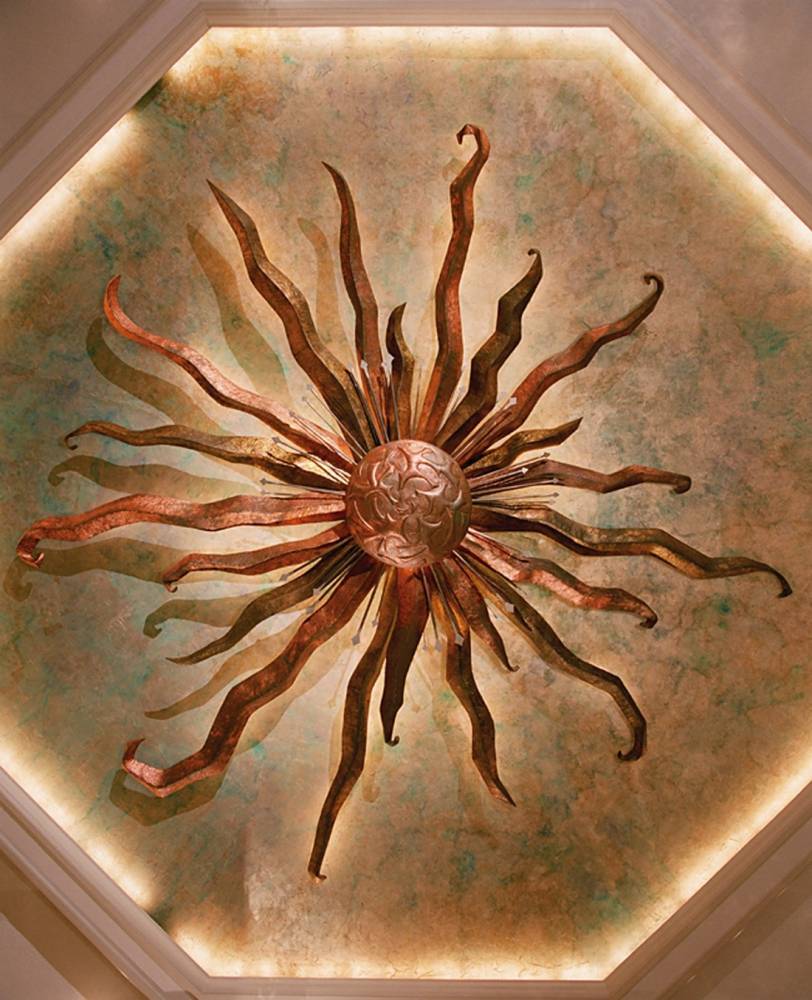
Adding to The Lobby’s overall aesthetics is a pair of tapestries made following a centuries-old Portuguese technique in needlepoint hand-stitching called arraiolos. With this technique, the wool yarns are woven on a jute backing that looks like a single needle cross stitch.
The tapestries, which are referred to as The Makati and The Ayala, measure 4 meters (13 feet) x 6.6 meters (21 feet) and 7 inches each, making them the largest tapestries of their kind anywhere in Asia. The Makati tapestry depicts the indigenous flora and fauna of the Sierra Madre range with Mayon Volcano in the distance, while the Ayala tapestry shows the mountains of the Cordilleras. Five weavers from Canlubang town in Laguna were assigned the task of meticulously hand-stitching each piece. They spent four months weaving the tapestries.

The reference points for the tapestries were themselves works of art by figurative painter Ephraim Samson. His oil paintings have since found a prominent space on the hotel’s second floor. More artworks are found inside the dining outlets.
Old Manila restaurant has Filipino-Spanish photographer Francisco “Paco” Guerrero’s dramatic black-and-white photographs of the nautilus staircases of the National Museum of the Philippines adorning its walls.
Archiving project
The restaurant’s private dining room, The Magsaysay Room, has a portrait of the late President Ramon Magsaysay and his wife Luz Banzon Magsaysay. It also displays the Ramon Magsaysay Award for philanthropic service given to Horace and Lawrence Kadoorie, the founding fathers of The Pen’s parent company.
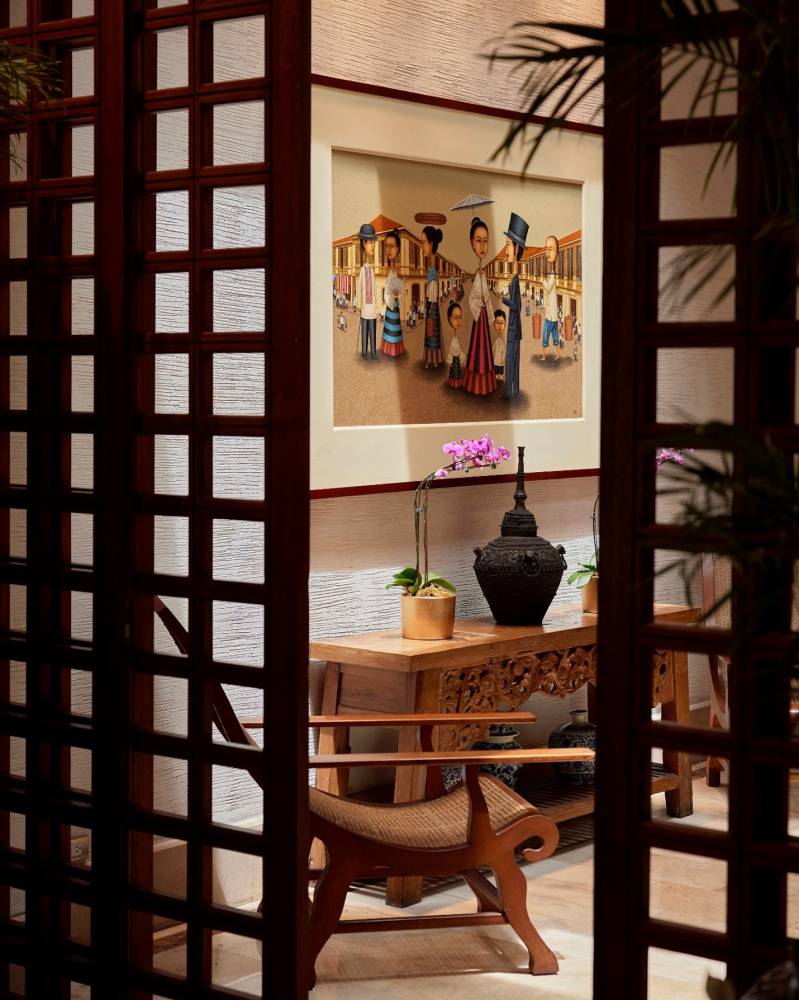
Also noteworthy are Spices restaurant’s four oil paintings by abstractionist Romeo Gutierrez, as well as Escolta’s collection featuring those made by artists Dominic Rubio, Renato Ong, MM Yu, Rosario Herrera, and Eugene Jarque.
Meanwhile, Salon de Ning’s four themed rooms offer a feast for curious minds, such as a collection of 12 pairs of boxing gloves used as décor that include those once used by Manny Pacquiao.
Finally, The Gallery Club Lounge on the expansive third floor space has an impressive display of original commissioned artworks by masters gracing its walls. Leading the list is National Artist for visual arts Ang Kiukok, who created 20 paintings based on famous Philippine historical landmarks and festivals, such as the Cagsawa Ruins and the Peñafrancia festival in Bicol.
The Pen’s impressive art collection is included in the archiving project that Garchitorena and the rest of his staff have undertaken as a “passion project” leading to the hotel’s golden anniversary in 2026. They have also published a book, “The View From The Peninsula Manila: Stories of Hope and Connection in a Strange Time,” which features firsthand accounts of 30 hotel workers of their experiences during the COVID-19 pandemic. More projects and events are in store, they promise.














